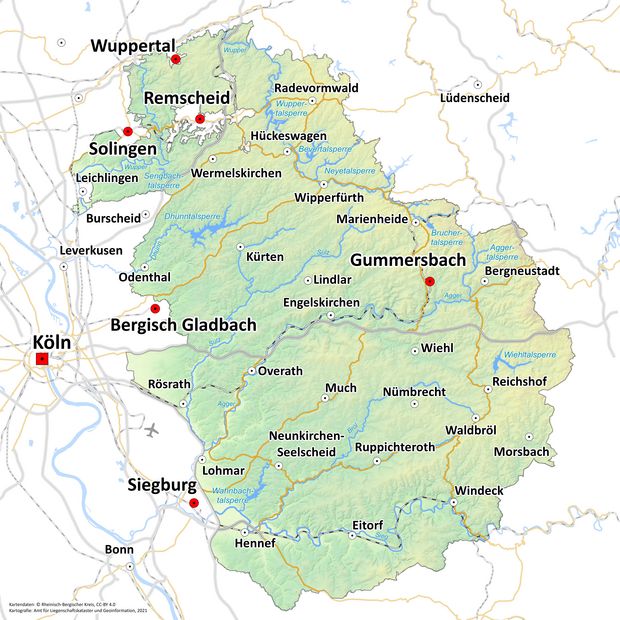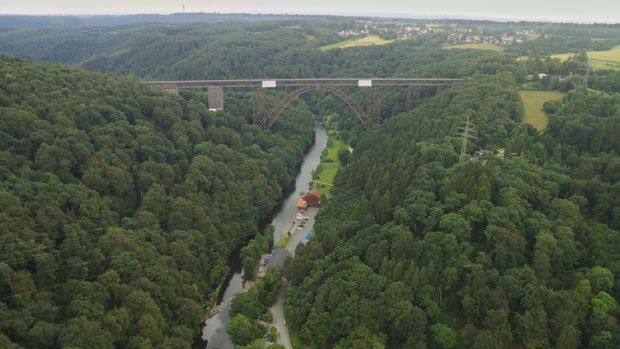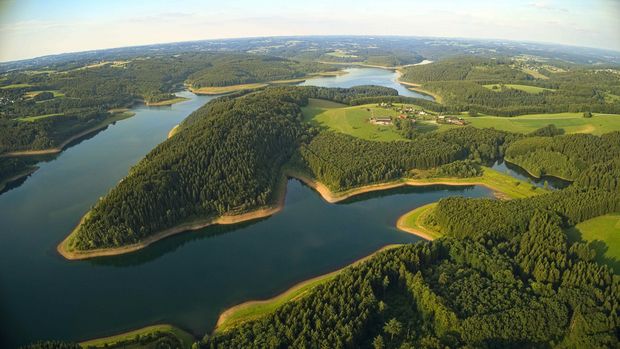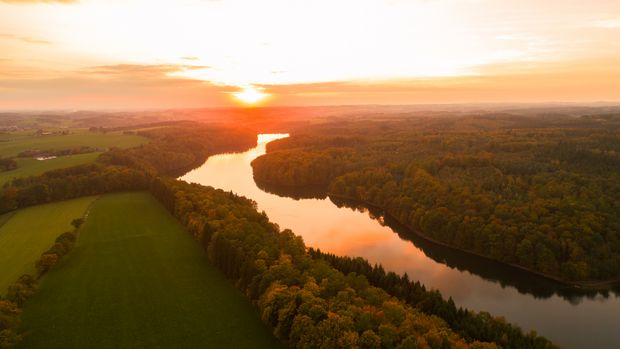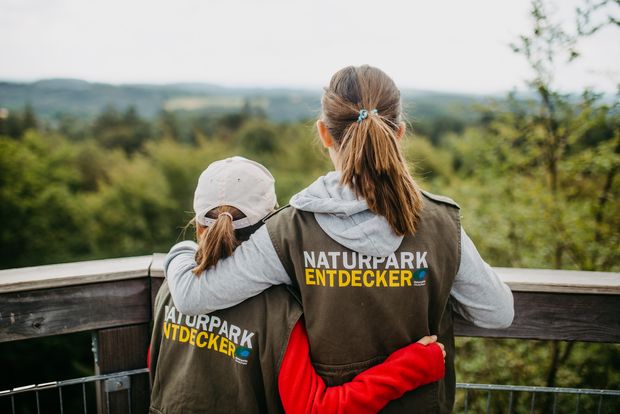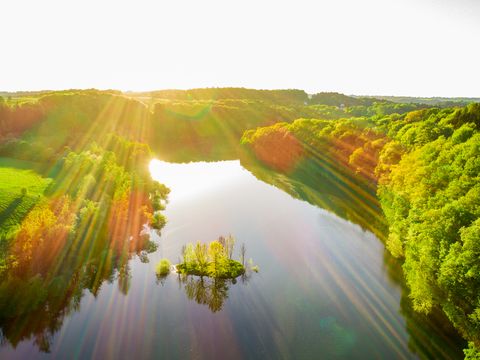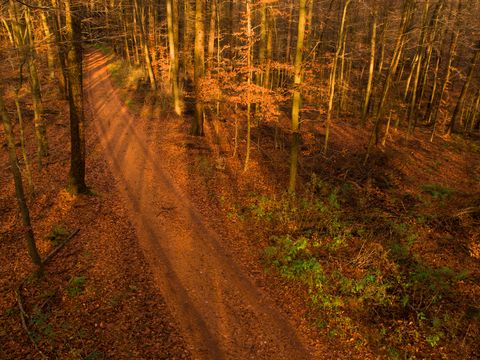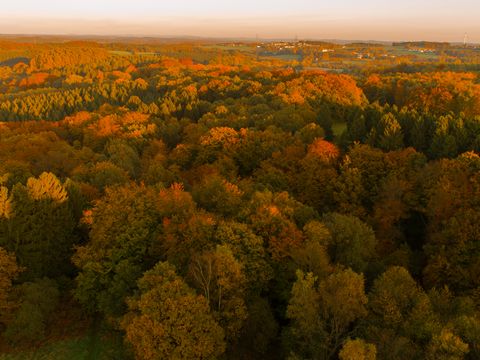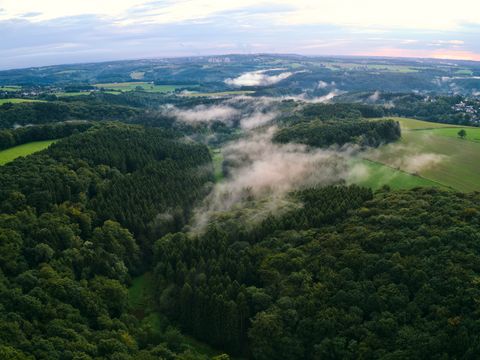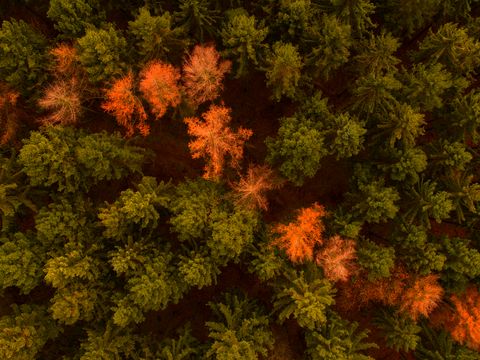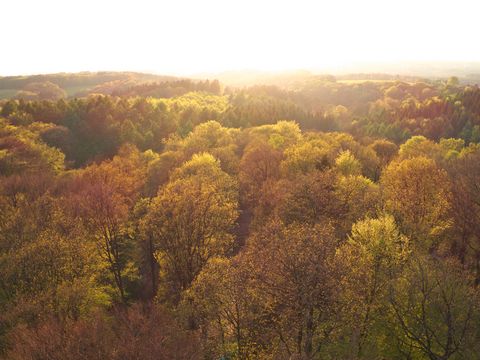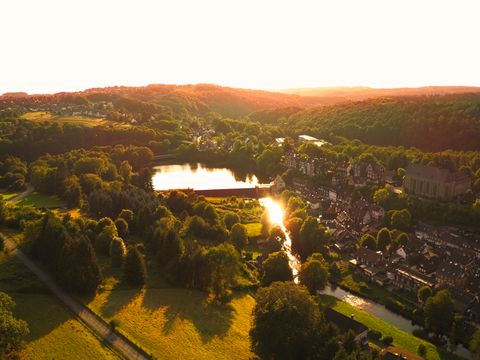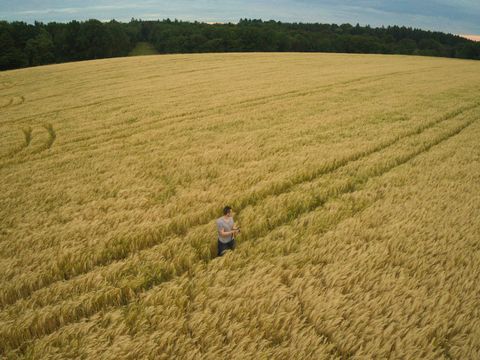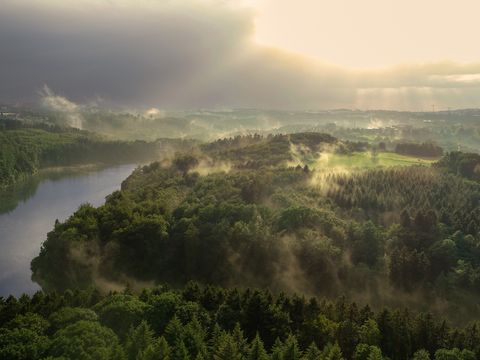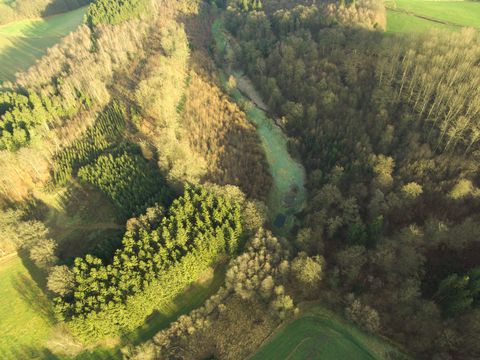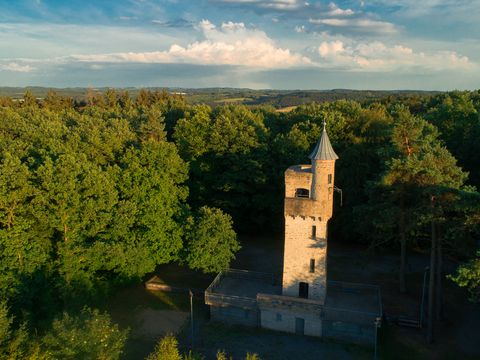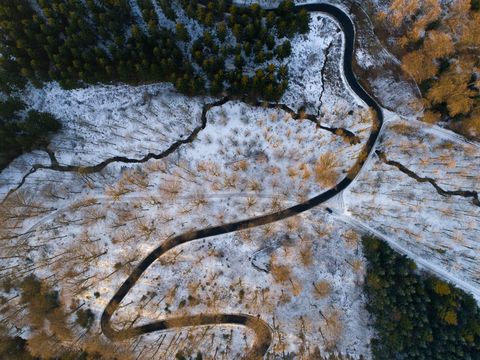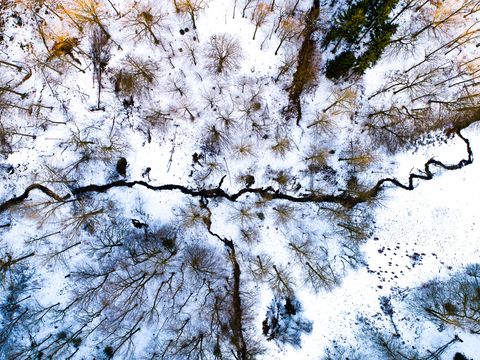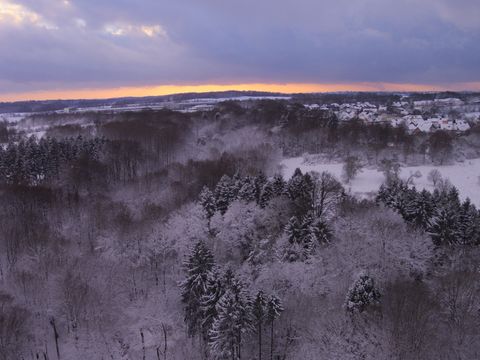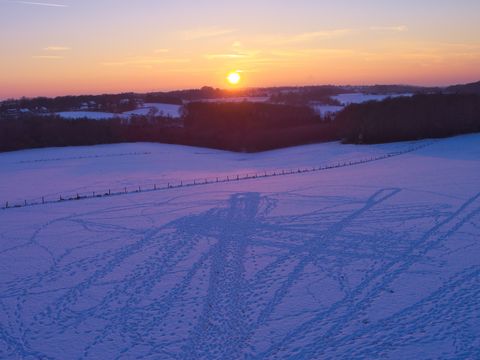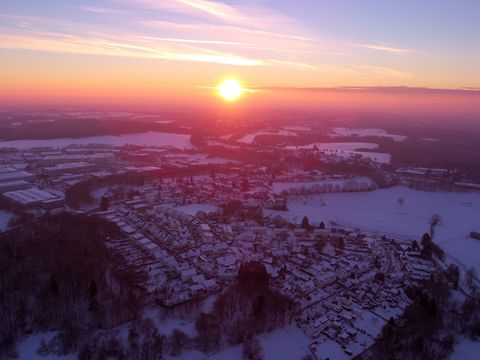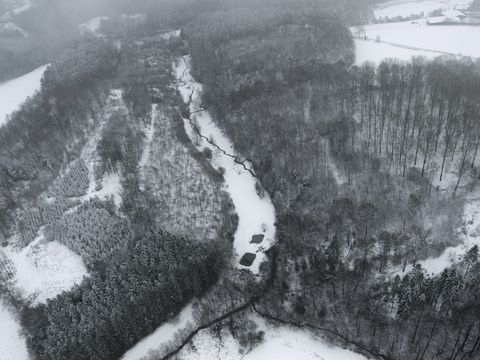Nature park Bergisches Land
Natural classification
The Bergisches Land Nature Park was founded in 1973 and covers an area of 2027 square kilometres between the Wupper and Sieg rivers, from the Sauerland to the gates of Cologne. It is one of the 12 largest nature parks in Germany and home to over 715,000 people, as well as many rare and regionally typical plants and animals. It is one of Germany's national natural landscapes.
Between numerous green hills, the nature park offers a diverse cultural landscape, characterised by agriculture and forestry, but also by one of the oldest industrial regions in Germany. The frequent ups and downs of the landscape, the many river and stream valleys and the numerous mountain ranges result in a small-scale, species-rich natural landscape in the immediate vicinity of the Cologne / Bonn conurbations in the west and the Ruhr area in the north.
The density of 17 dams, which is unique in Europe, represents a special potential. Here, sustainable projects are currently being developed for various dams as part of the river and dam concept of Regionale 2025, Bergisches Rheinland. As part of the All Inclusive project, the Brucher Dam is currently being developed into a barrier-free lake.
